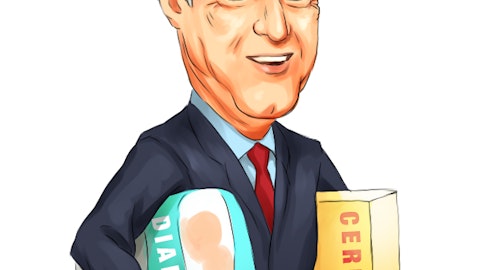4. JPMorgan Chase & Co. (NYSE:JPM)
Number of Hedge Fund Holders: 110
Citadel Investment Group’s Stake Value: $573,064,000
JPMorgan Chase & Co. (NYSE:JPM) is an American multinational financial services company that operates through four segments – Consumer & Community Banking, Corporate & Investment Bank, Commercial Banking, and Asset & Wealth Management. In Q3 2022, Ken Griffin lifted his stake in JPMorgan Chase & Co. (NYSE:JPM) by a whopping 1243%, holding 5.4 million shares worth $573 million.
On November 18, JPMorgan Chase & Co. (NYSE:JPM) announced that it is planning to expand its reach within US minority small business lending with a special-purpose credit program. The program has been tested out in Dallas, Texas, Detroit, Michigan, and Miami as part of the firm’s initiatives to offer more financing opportunities for minority businesses. Overall, JPMorgan Chase & Co. (NYSE:JPM) could have 100,000 new accounts opened over a span of five years with this lending, as well as another program starting in 2023.
Citi analyst Keith Horowitz reiterated a Buy rating on JPMorgan Chase & Co. (NYSE:JPM) on October 17 with a $135 price target following the company’s Q3 results. The analyst noted that the bank is “hitting on all cylinders” and that present share levels provide an “excellent entry point” for a “quality franchise.”
According to Insider Monkey’s Q3 data, 110 hedge funds were long JPMorgan Chase & Co. (NYSE:JPM), compared to 104 funds in the earlier quarter. Ken Fisher’s Fisher Asset Management is the largest shareholder of the company, with 7.85 million shares worth $821 million.
Here is what Vltava Fund has to say about JPMorgan Chase & Co. (NYSE:JPM) in its Q3 2022 investor letter:
“We regard JPM to be the strongest and best- managed bank in the world. It is a leader in investment banking, commercial banking, credit cards, and asset management. Its size (the largest bank in the USA, with nearly USD 4,000 billion in assets) and diversification give it a strong competitive advantage that is compounded by its cost advantages and the high costs to clients associated with switching banks. JPM’s management prides itself on running the only large bank to avoid major instability over the long term.
JP Morgan’s quality and strength first became fully evident in 2008 under the leadership of its CEO Jamie Dimon. Not only did JP Morgan help to stabilize the market by taking over the failing Bear Stearns in the spring of that year, but throughout the Great Financial Crisis it was the only big US bank that did not require government assistance and it was highly profitable even in the difficult year of 2008.
A well-functioning and efficient bank can be a very good long-term investment, because the interest compounding effect works well here. JPM’s return on equity (ROE) is well into the double digits and this puts it in a good position to continue producing better long-term returns than does the market. JPM has been very profitable even during years when interest rates were close to zero. The current – and perhaps not temporary – return to somewhat more normal, higher interest rates should have a significantly positive impact on the bank’s interest income and overall profitability.”





